The exhibition The Shadow of Youth. Federigo Tozzi and the Figurative Arts, which opened on April 10 in the airy rooms of Santa Maria della Scala in Siena and will be on view until July 20, not only offers a dutiful insight into Federigo Tozzi, one of the most important of the early 20th century in his hometown a little more than a century after his death, but also reconstructs his (certainly not without interest) relationship with the figurative arts, resulting in an exhibition that is sure to be appreciated by fans of 20th-century art.
If today Federigo Tozzi (Siena, 1883 - Rome, 1920) has been agreed upon as one of the greatest storytellers of the period, so, however, did he not appear in the eyes of critics for many years after his death. In fact, his literary experience was often provincialized and brought back into the groove of verism; only since the 1960s has the man of letters been credited with having demonstrated through his works an attention to the psychological datum and an openness even to certain poetics of Symbolism, which are reflected in contemporary European novelists such as Kafka and Dostoevsky. This is a remarkable cultural bearing, and moreover acquired as a self-taught scholar. In fact, Federigo was born in Siena to a family of average social background: his father, of peasant origin and unaccustomed to culture, owned a restaurant and later some farms, while his mother died when Federigo was still very young. He poorly conducted his studies at school, from where he was repeatedly expelled. As soon as he was sixteen years old, he assiduously attended the Biblioteca Comunale degli Intronati in Siena, where his omnivorous curiosity led him to be confronted with writers as diverse as De Amicis, Petrarch, D’Annunzio, Carducci, Ovid, Dante, Goethe and many others.
Federigo’s life and upbringing are strongly influenced by the despotic figure of his father, who was distrustful of culture, which can be found in certain characters in Tozzi’s literature. In 1908 his father died, and into Federigo Tozzi’s life came Emma Palagi, who became his wife. Gradually Federigo gained influence in the literary field, also collaborating with numerous newspapers and magazines. Again to indulge this project he sold the property he inherited from his father and moved to Rome around 1914. But Tozzi’s process of affirmation was abruptly interrupted by his sudden death that occurred due to pneumonia. Several of his works were published posthumously, and as already mentioned only with considerable delay did literary critics become interested in Federigo Tozzi and his output. The exhibition in Siena, named after one of Tozzi’s last published novellas, is intended as a survey of the many relationships the Sienese artist had with painters, sculptors and illustrators, not only through the display of the works of the authors he knew in his lifetime, but also thanks to a rich documentary appendix.
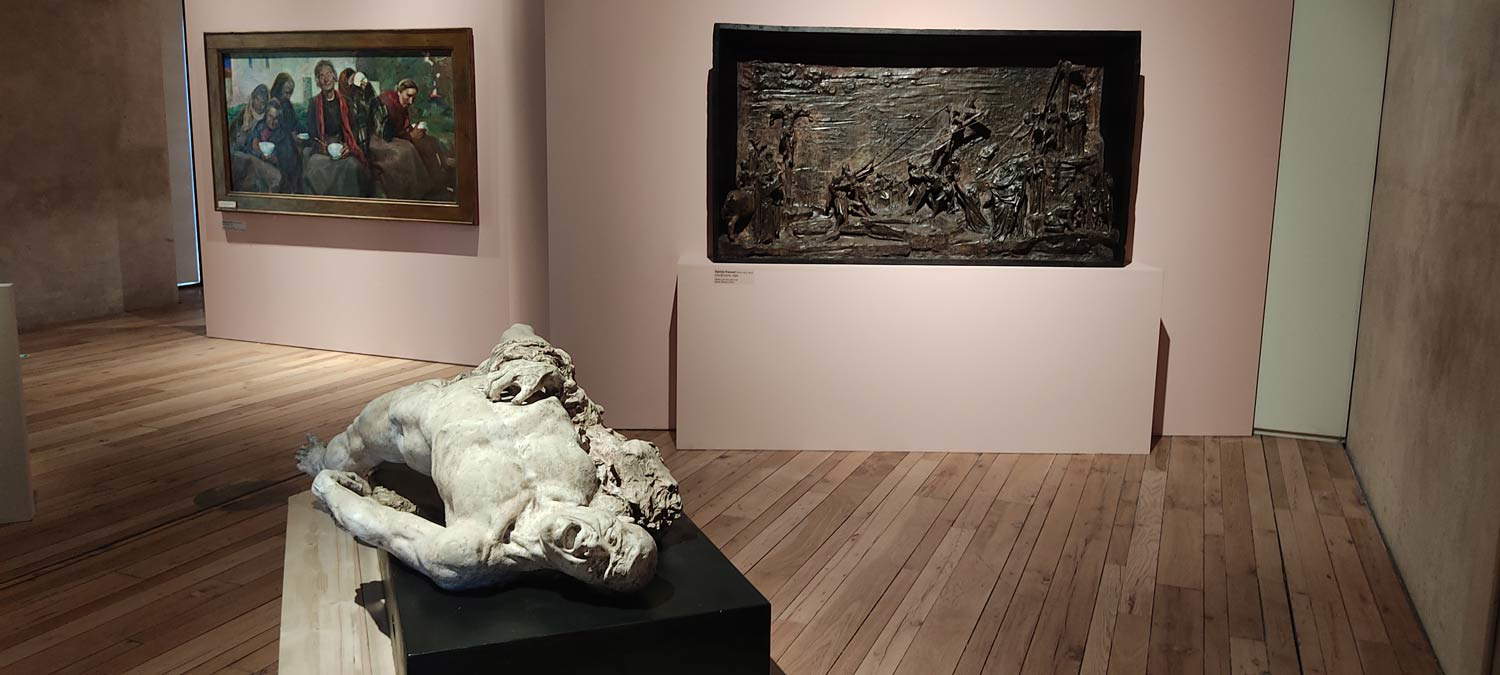
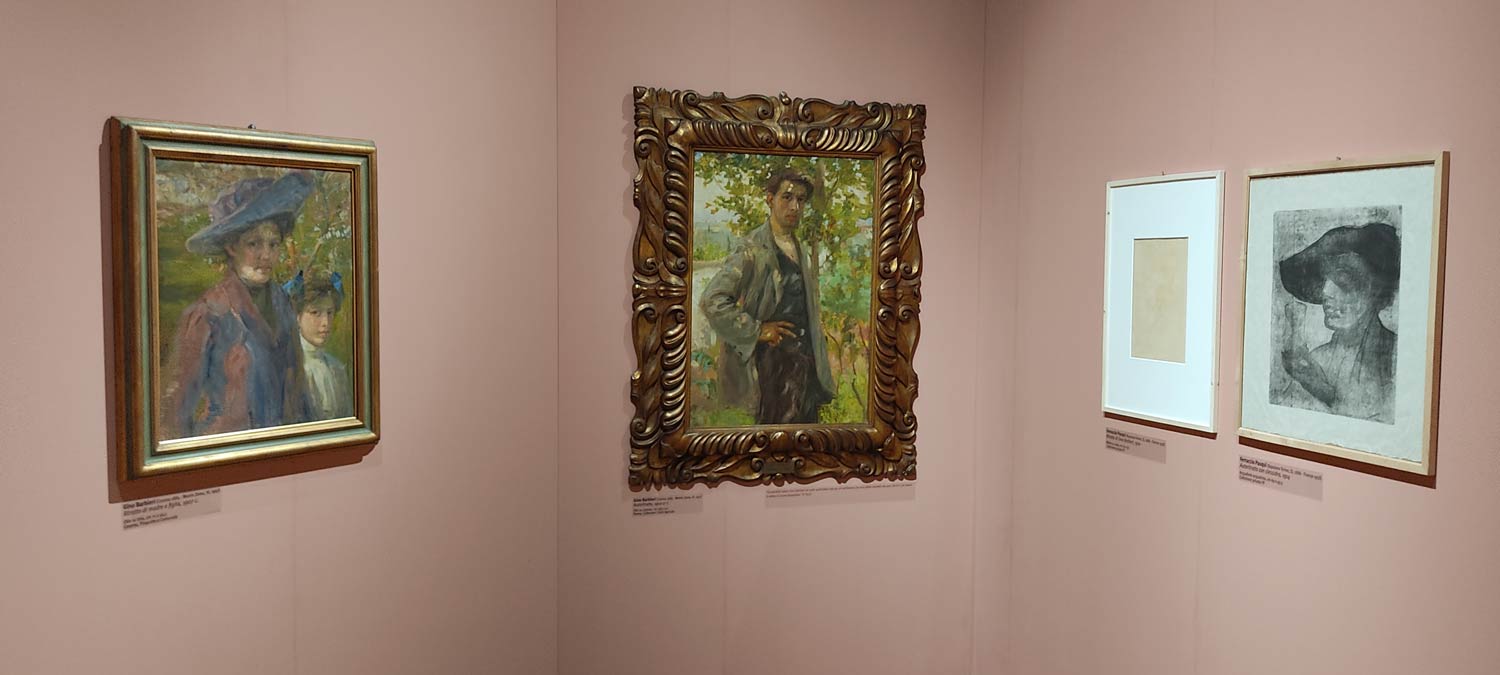
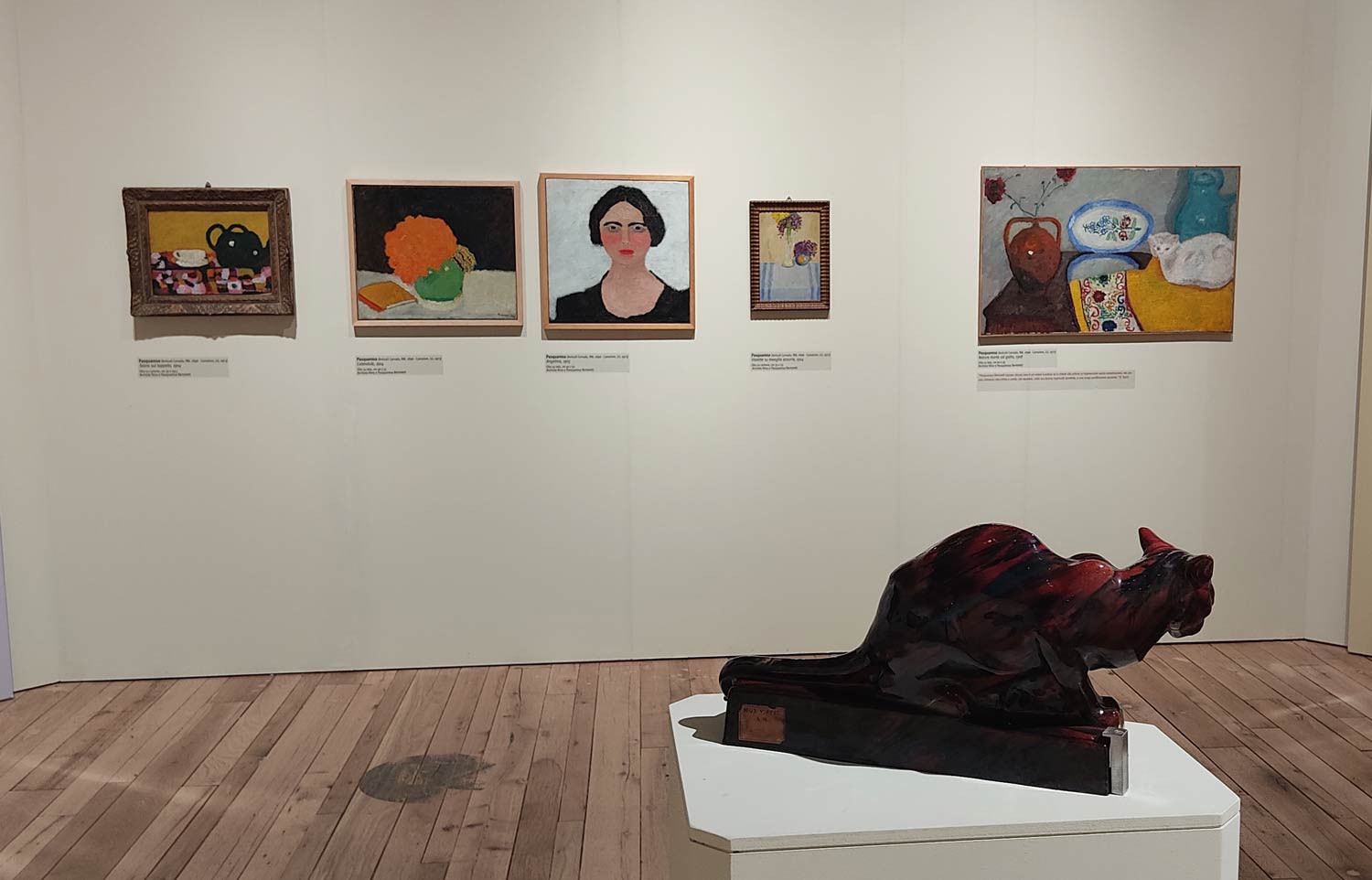
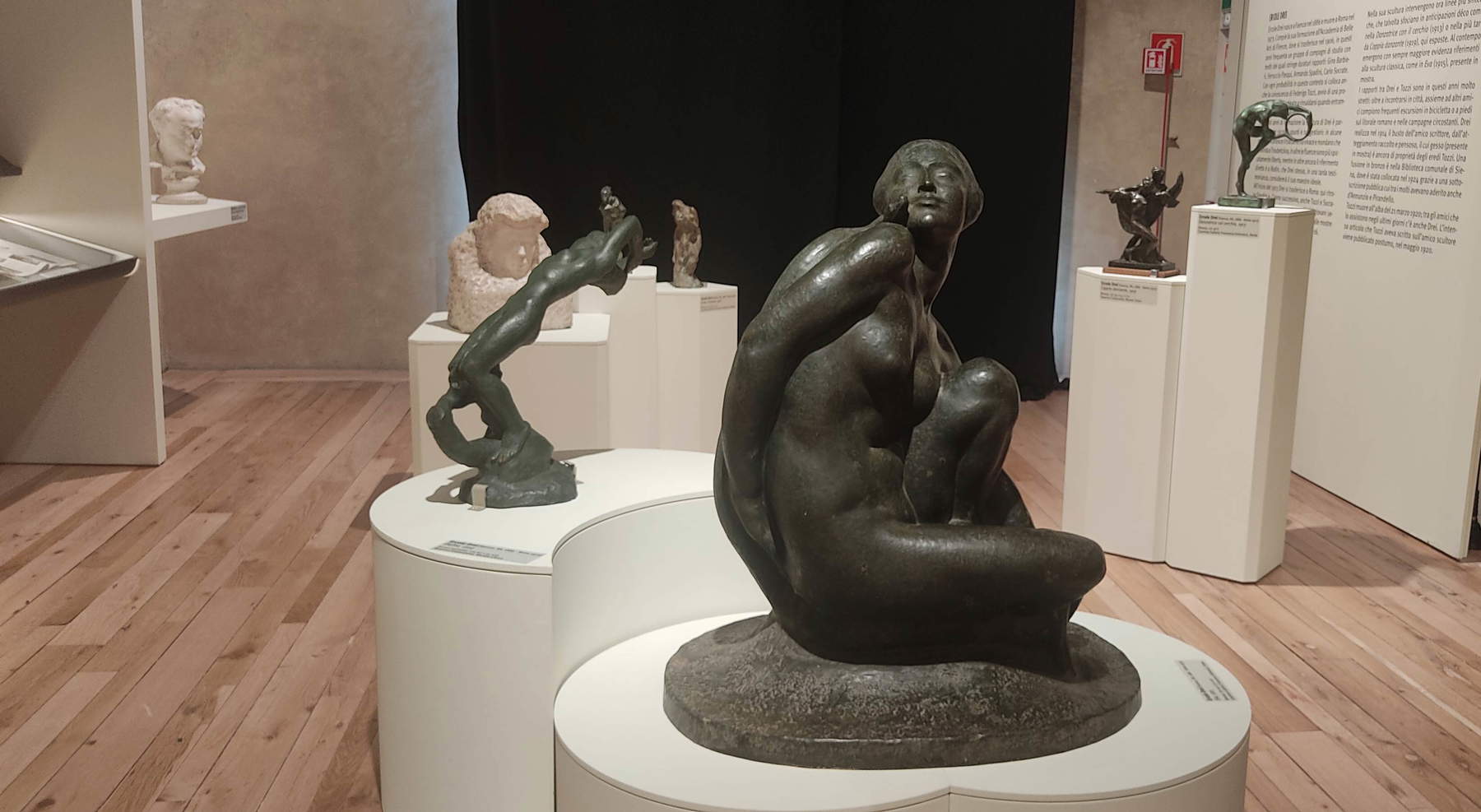
During his formative years in Siena, Tozzi came into contact with numerous intellectuals and artists, and during this period he approached the Socialist Party, also cultivating anarchist sympathies. During his troubled studies, which led him to attend the Institute of Fine Arts, he met sculptor Patrizio Fracassi and painters Umberto Giunti and Ottorino Lorenzini. The sculptures on display by Fracassi are almost all in plaster, since he did not have the opportunity in his lifetime to translate them into bronze. The artist, in fact, died by suicide not even in his thirties, and many of his works that entered the collections of the City of Siena ended up mutilated or as Tozzi lamented “in pieces like the souls of the survivors.” For this reason, it was necessary to restore the plaster casts before the exhibition. Fracassi’s works testify to a veristic tendency to render a derelict and suffering humanity, with such a dramatic flair that it sometimes borders on expressionism, as in Schiavo Morente, a far cry from the classicism of one of his early works, a plaster copy of which is on display in the exhibition, La Fiducia nella croce, made for a funeral monument.
Tozzi’s fascination with his friend’s works did not end with the artist’s death; on the contrary, the man of letters published a number of critical contributions on Fracassi, lamenting his lack of fame: “After Fracassi’s tragic suicide, even his work would seem destined to disappear, then that no one has shown any understanding of its high and unforgettable value [....] It is time to put an end to this intolerable apathy [...] Fracassi is not a fabrication [...] I believe [...] that by a complex of malevolent circumstances he has always been sidelined; and, perhaps, for ulterior motives. But it should no longer be so [...]. It is necessary to speak up and, perhaps, nudge [...].” Other works by Sienese friends are also on display in the exhibition, such as Fulvio Corsini ’s sculptures and Umberto Giunti’s paintings, artists who, like Fracassi, were often engaged in making social art, moreover in line with many instances of the time.
Also on display are woodcuts and paintings by Cesena-born Gino Barbieri, a pupil of Adolfo de Carolis, who established a long friendship with Tozzi. Both collaborated with the magazine L’Eroica, for which Barbieri produced woodcuts in the Art Nouveau style. The same artist engraved two illustrations in neo-fourteenth-century taste for Tozzi’s The City of the Virgin. Another great artist whom Federigo Tozzi counted among his friends was the restless Lorenzo Viani: they had met when they were young, and the man of letters would have liked one of his engravings as the cover of one of his literary works, but the project never came to fruition because of the publisher’s resistance. On display are numerous woodcuts by the Viareggio artist as well as the monumental canvas The Blessing of the Dead of the Sea specially flown in from Viareggio. Viani’s masterpiece is a sacralization of human grief, the desperate and mournful protagonists seem to have come out of the brush of a primitive painter and are also influenced byart nè;gre. And although all the people imprinted on the canvas are united by sadness and despair, “Viani knows how to find dissimilar psychologies, and it does not harm him that all his figures must vouch for their melancholy and sadness,” Tozzi wrote.
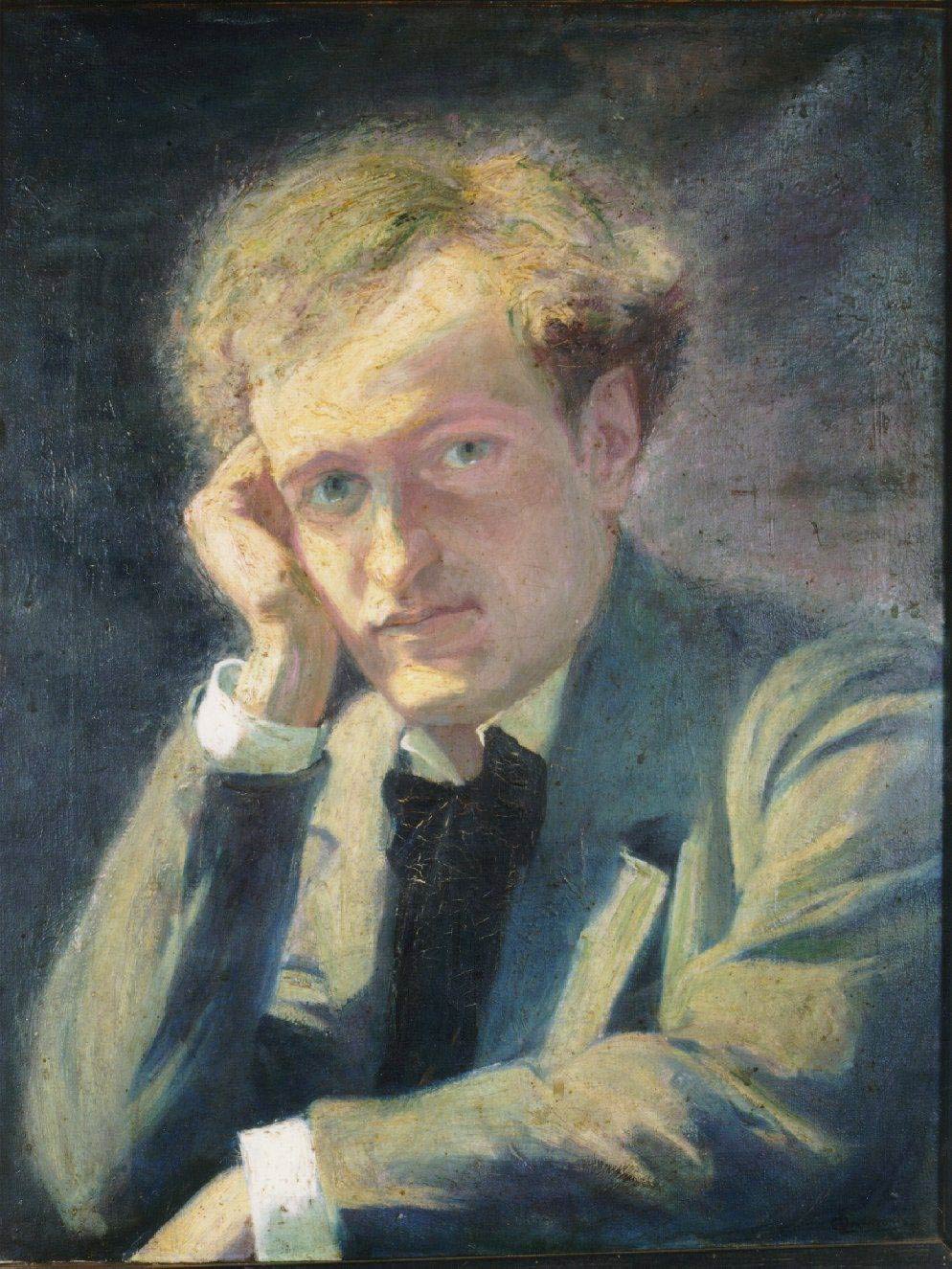
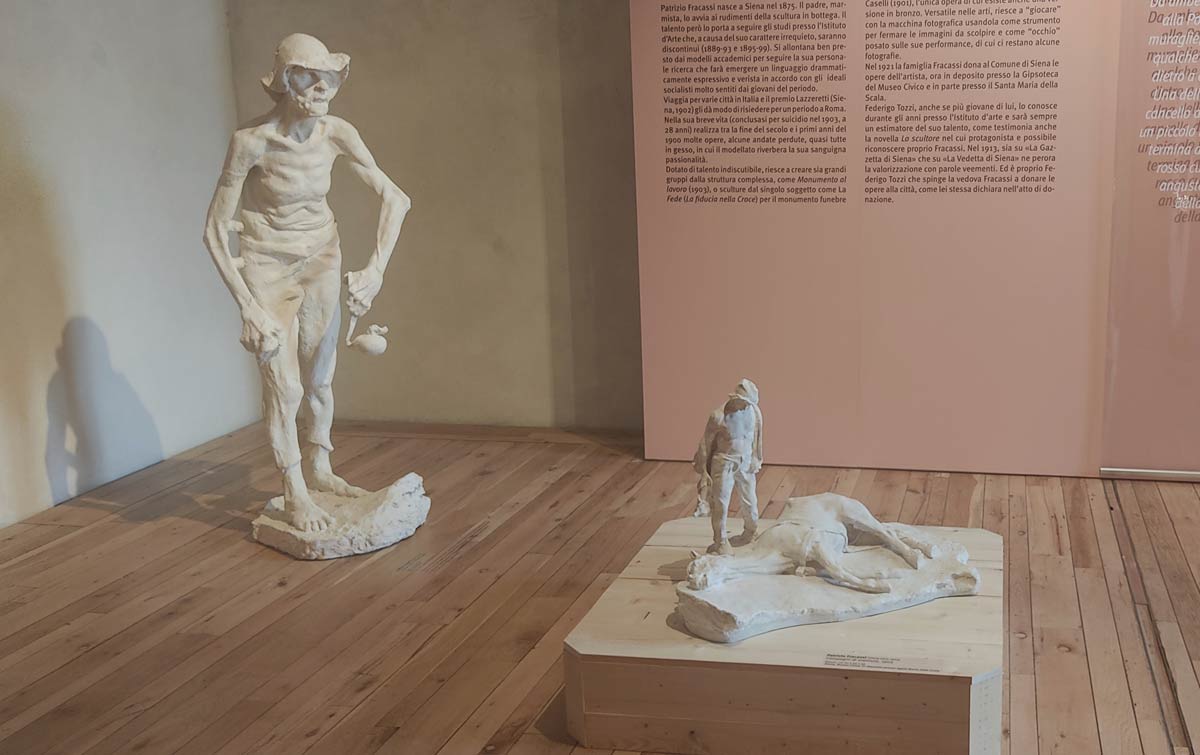
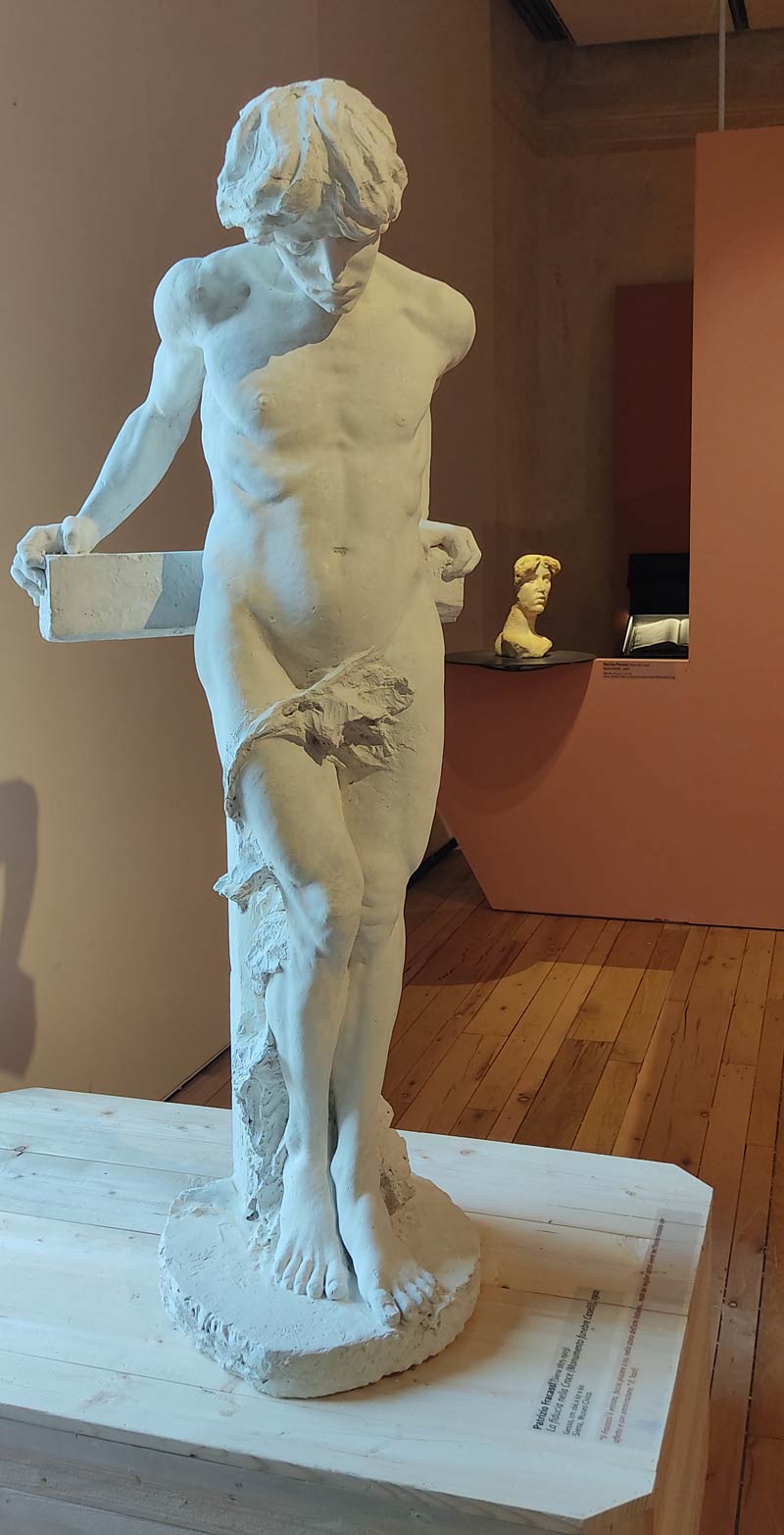

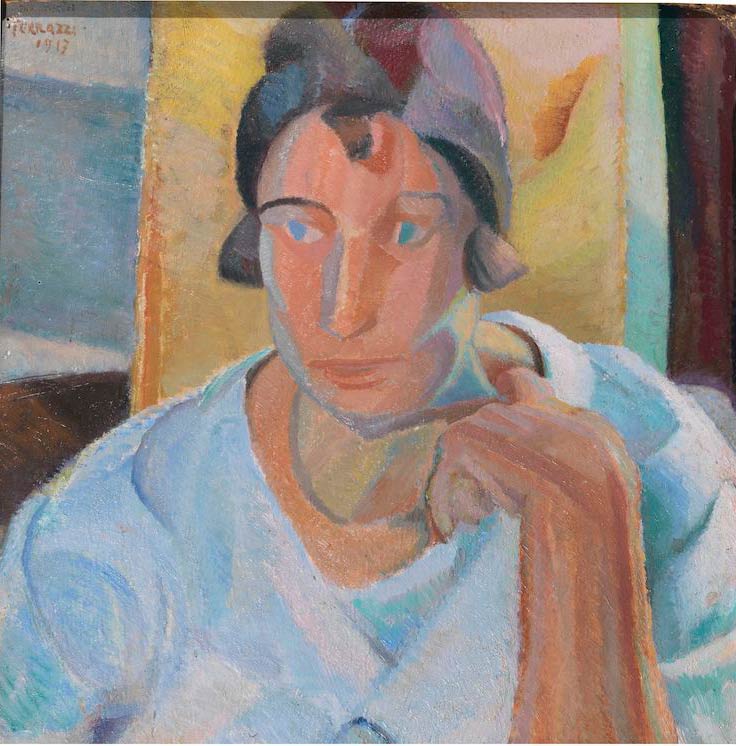
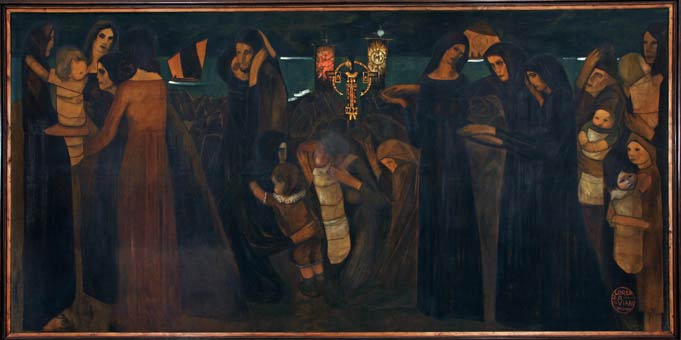
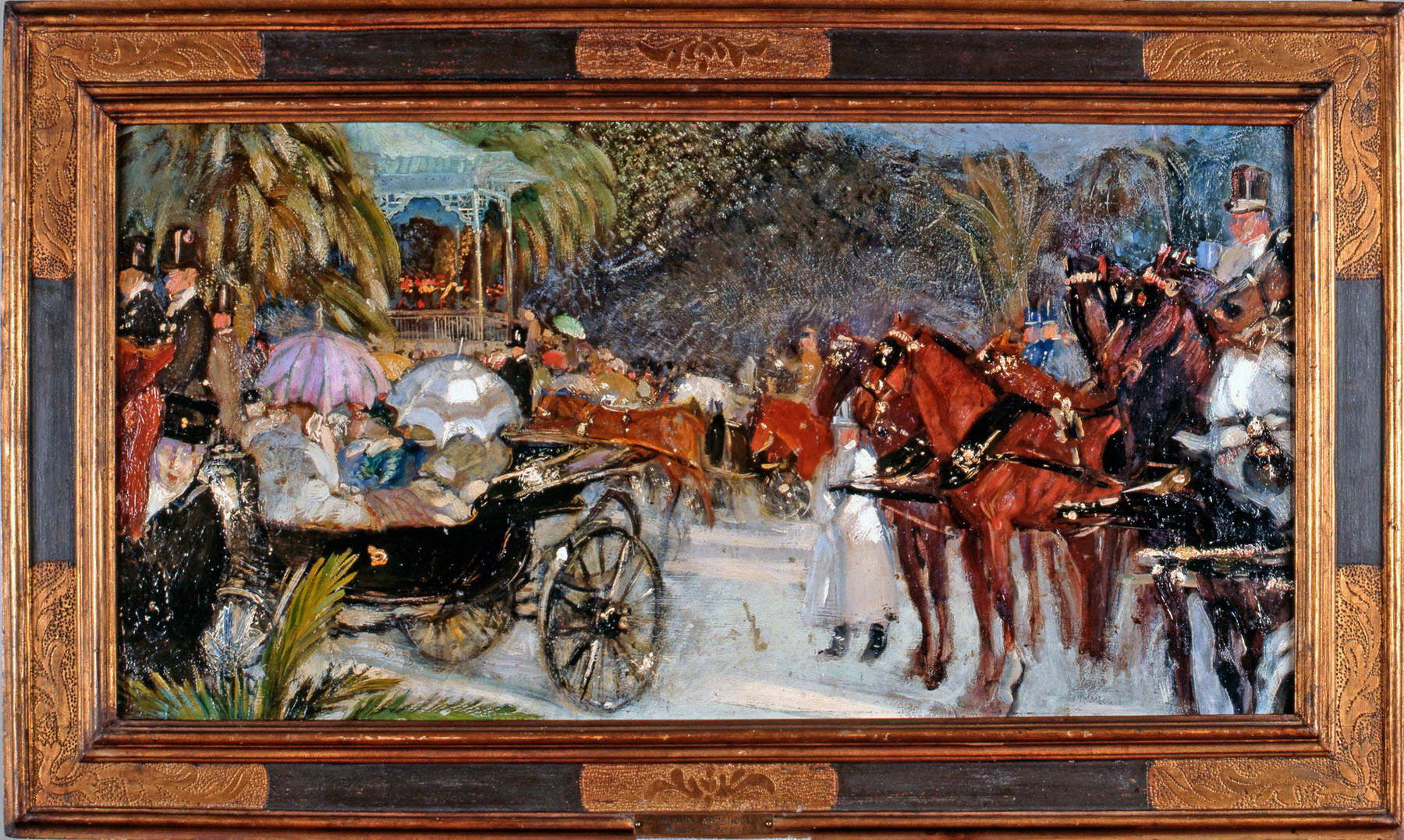


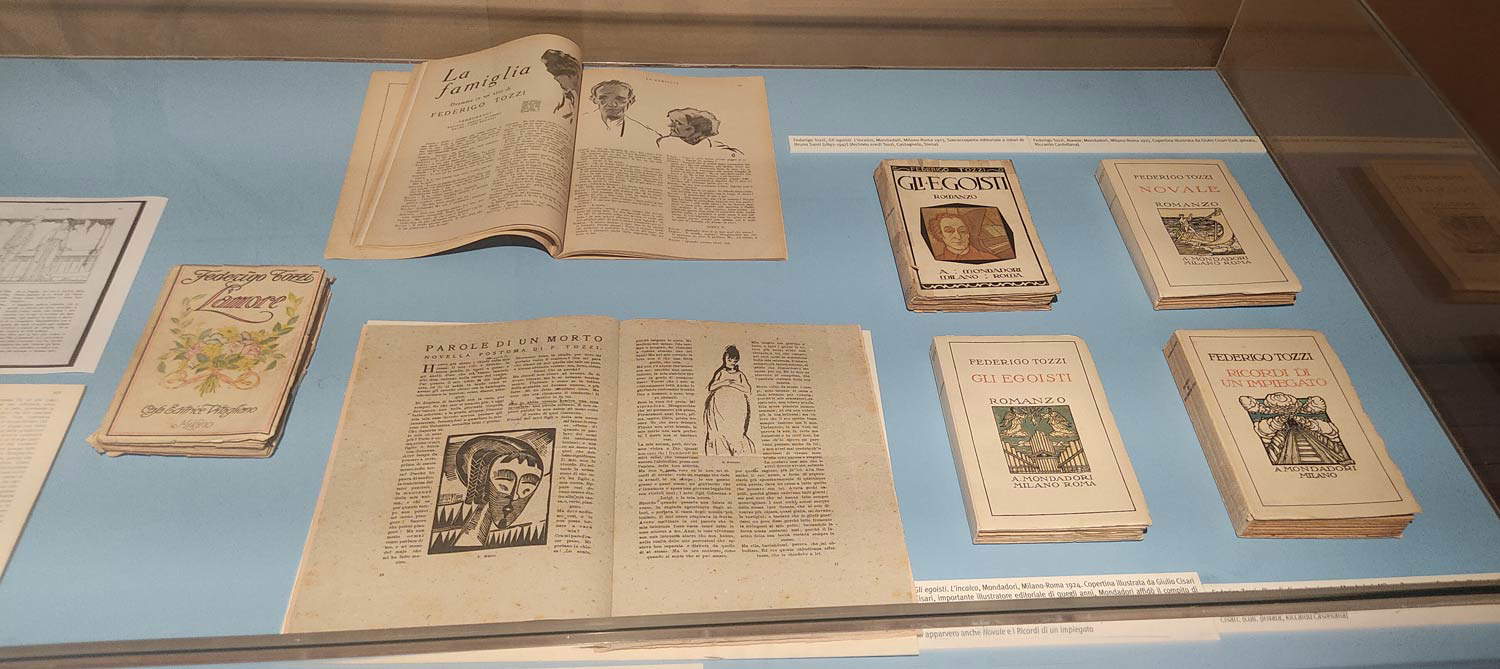
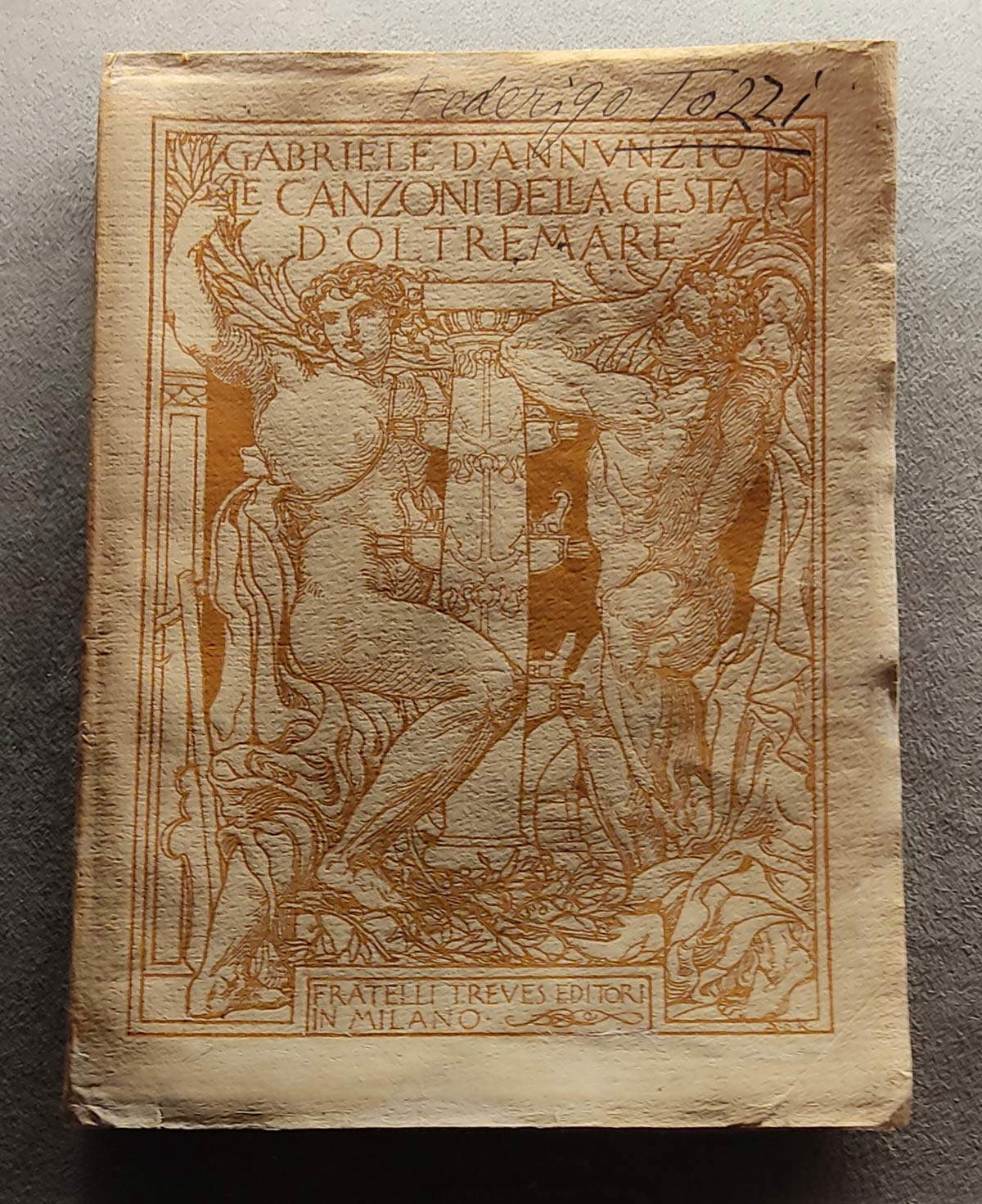
With his move to Rome in 1914, in addition to his first literary successes, Tozzi lived in a lively artistic climate, and he rediscovered old acquaintances such as Ercole Drei and Viani; he came into contact with many new artists, including the protagonists of the Roman Secession: a cohort of artists, who found themselves in controversy with the Society of Amateurs and Connoisseurs of Fine Arts and their anachronistic and academic exhibition policies, and decided to rally to open the Roman milieu to new trends in modern European art. Not surprisingly, their exhibitions often featured works by the Impressionists, Rodin, post-Impressionists, and even the Fauves movement, who were moving in those years and who had great influence on the Roman group, an influence that on a par with the Cézanne imprint is often visible in the production of these early years of the Secession. Many of these artists were then present at the famous Youth Art Exhibition at the Casina del Pincio in 1918, about which Tozzi wrote extensively (demonstrating his extraordinary critical ability) in the Messaggero della Domenica, the newspaper edited by Luigi Pirandello. The Sienese writer was well impressed by the exhibition despite “its inequalities” and particularly appreciated the work of painter Armando Spadini. The Florentine painter, trained under Giovanni Fattori, was the author of a painting with a rich and frolicsome draftsmanship, indebted to Impressionist stylistic features: “an impasto of complex intensity” that, according to Tozzi, gives life to “another complex reality, which responds to a given attitude of thought that is almost always definitive.” While of the painter Pasquarosa Marcelli, author of a painting with strong colors and a synthetic formal composition, Tozzi spoke of “an uncomplicated expression,” “a descriptive and humble clarity” achieved through “a long patient purification.”
But the exhibition also includes sculptures by Attilio Selva from Trieste that are strong in their focus on “movement, from which a hard sense of fleshiness seems to want to make itself independent,” as well as the paintings of Cipriano Efisio Oppo, author of a painting of dazzling colors, but which already seem to herald a recovery of tradition typical of the “return to order” that, like Tozzi, he had advocated ahead of his time. By the Roman Ferruccio Ferrazzi a number of paintings are on display, includingAdele in three lights, a work chosen as the exhibition’s symbol. The painter was in those years fiercely opposed for his painting with crooked and irregular outlines, and instead in Tozzi he found a staunch defender. This testimony shows us how the Sienese artist boasted a complex sensibility open to experimentation.
In Rome, Tozzi also found Ercole Drei, also a protagonist of the Secessions, some of whose sculptures are on display in the exhibition: some with a blatantly Art Nouveau taste like the Dancer with a Circle, others mindful of classical sculpture as in Eve of 1915. The friendship between the sculptor and the man of letters was very close, and the two shared much time together, making excursions by bicycle or on foot along the Roman coast. The sculptor made the bust of Tozzi in 1914, in the exhibition present in a plaster version, which, after the death of the man of letters, was made in bronze for the public library of Siena, thanks to a subscription, in which D’Annunzio and Pirandello, among others, participated. Tozzi on his friend’s art also wrote a long and touching article, in which the writer praised his sculptural skills and ability to infuse his models with “an almost architectural law” and “a sense of spiritual modification.” The Faenza artist also knew how to be a good friend on his part, and was also at Federigo Tozzi’s bedside when he died prematurely on March 21, 1920.
The exhibition in Siena does not limit itself to representing the figurative universe that surrounded the Sienese man of letters, which he was able to read and put into words with acute sensitivity, but proposes an exhibition itinerary, rich in documentary appendices, photos, manuscripts, letters and journals, attempting to reconstruct the experience of a life that, though brief, was rich in contributions and reasons for interest. And which for that reason deserves to be known.
Warning: the translation into English of the original Italian article was created using automatic tools. We undertake to review all articles, but we do not guarantee the total absence of inaccuracies in the translation due to the program. You can find the original by clicking on the ITA button. If you find any mistake,please contact us.